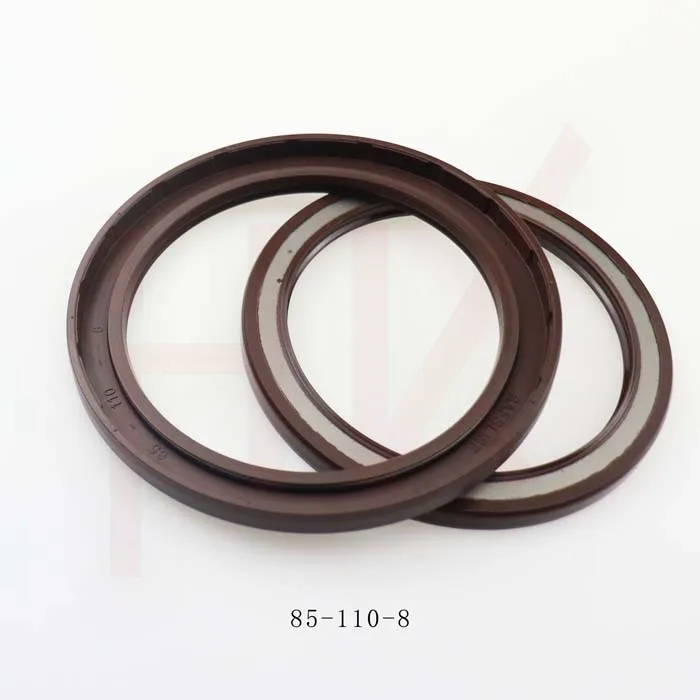Dec . 22, 2024 00:23 Back to list
hydraulic cylinder seals
Understanding Hydraulic Cylinder Seals Key Components for Performance and Longevity
Hydraulic systems play a crucial role in various industrial applications, from construction machinery to manufacturing equipment. At the heart of these systems lies the hydraulic cylinder, which converts hydraulic energy into mechanical force. However, the efficiency and reliability of hydraulic cylinders depend significantly on one critical component seals. In this article, we will explore the different types of hydraulic cylinder seals, their functions, and why they are essential for the performance and longevity of hydraulic systems.
The Role of Hydraulic Cylinder Seals
Hydraulic cylinder seals are designed to prevent the leakage of hydraulic fluid, thereby ensuring the cylinder operates efficiently and maintains the necessary pressure. These seals are subjected to high pressures and varying temperatures, making their durability and functionality paramount. The primary functions of hydraulic cylinder seals include
1. Fluid Containment Seals prevent hydraulic fluid from leaking out of the cylinder, ensuring that the hydraulic system operates effectively without loss of pressure.
2. Contamination Prevention Seals protect the hydraulic fluid from dirt, dust, and other contaminants that can enter the cylinder, which can lead to wear and tear, and ultimately, failure of the hydraulic components.
4. Energy Efficiency By preventing leaks, seals contribute to the overall energy efficiency of the system, reducing the need for additional fluid to maintain operational pressure.
Types of Hydraulic Cylinder Seals
There are several types of seals used in hydraulic cylinders, each tailored to specific applications and conditions
1. Rod Seals These seals are located at the rod end of the cylinder and are responsible for preventing fluid leakage out of the cylinder when the rod is extended. Common types include O-rings, lip seals, and U-cups.
hydraulic cylinder seals

2. Piston Seals Positioned inside the cylinder, piston seals prevent fluid from leaking past the piston as it moves. They have to withstand significant pressure and are typically designed as lip seals or V-rings.
3. Guide Rings While not seals in the traditional sense, guide rings support the piston and rod during movement, preventing misalignment and excessive wear. They also contribute to sealing by providing a buffer against contaminants.
4. Dynamic vs. Static Seals Dynamic seals are used in areas where movement occurs, like rod and piston seals, while static seals are utilized in non-moving areas, such as end caps or ports.
Material Considerations
The choice of material for hydraulic cylinder seals is critical as it affects performance, longevity, and compatibility with the hydraulic fluid. Common materials include
- Nitrile (Buna-N) Provides good oil resistance and is a cost-effective option for standard applications. - Viton (FKM) Offers excellent heat and chemical resistance, making it suitable for high-temperature and aggressive fluid applications. - Polyurethane Known for its exceptional abrasion resistance and durability, polyurethane seals are often used in heavy-duty applications. - PTFE This material is non-stick and has low friction properties, making it an excellent choice for dynamic seals in challenging environments.
Maintenance and Replacement
Regular inspection and maintenance of hydraulic cylinder seals are vital to ensure system longevity. Signs of seal wear can include reduced performance, visible leaks, or unusual noise during operation. Timely replacement of damaged seals not only prevents further damage to the hydraulic system but also improves efficiency and safety.
Conclusion
Hydraulic cylinder seals are essential components that ensure the smooth operation of hydraulic systems. By preventing fluid leakage, protecting against contamination, and maintaining pressure, these seals facilitate the overall performance and longevity of hydraulic machinery. Understanding the different types of seals, materials, and the importance of maintenance can help manufacturers and operators optimize their hydraulic systems for maximum efficiency and reliability. Investing in high-quality seals and adhering to best maintenance practices will lead to better performance, reduced downtime, and cost savings in the long run.
-
Unlocking the Potential of Hydraulic Systems with Essential Sealing Solutions
NewsAug.06,2025
-
Unleash the Power of Your Hydraulic Systems with Our Premium Seal Kits
NewsAug.06,2025
-
Specialized Hydraulic Seal Kits for Breakers, Pistons, and Presses
NewsAug.06,2025
-
Revitalize Hydraulic Systems with Premium Repair and Seal Kits
NewsAug.06,2025
-
Fortify Your Cylinders with Premium Sealing Solutions
NewsAug.06,2025
-
Elevate Hydraulic System Reliability with Specialized Seal Kits
NewsAug.06,2025
-
TCN Oil Seal Metal Ring Reinforcement for Heavy Machinery
NewsJul.25,2025
Products categories
















